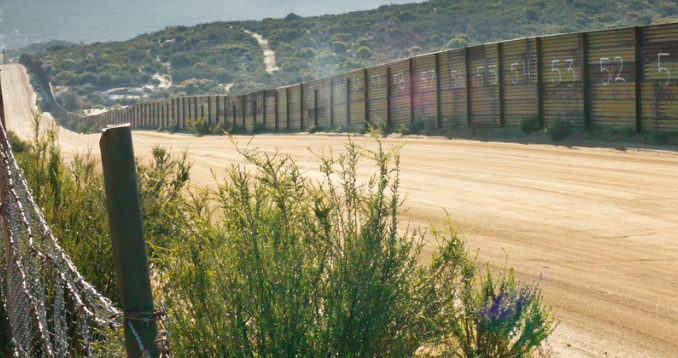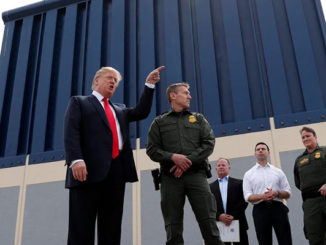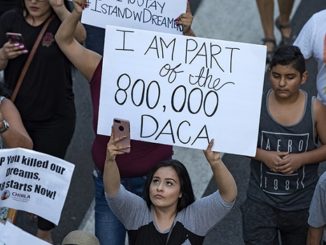
by Sylvia Longmire
Moving into an election year, immigration reform is on every politician’s mind yet not what they want to talk about. Border security isn’t far behind as a hot-button political topic. But no matter how much we debate or ignore these two issues, they are inextricably linked and remain confounding to anyone who attempts to provide a workable solution to either.
One example of this relationship is the Republican versus Democrat squabble over which should come first. Democrats believe immigration reform should come before considering the enormous (and maybe unnecessary) expense of additional border security. Republicans believe our government needs to secure the southwest border before tackling immigration reform.
The beauty (or ugliness)of this argument is that no one (on Capitol Hill anyway) can define what a secure border would look like. Would it be a Great Wall of China-[en dash]like structure along our two-thousand mile-long border with Mexico? Or would it involve removing the existing border fence and handling crossings from a regulatory and humanitarian perspective?
Despite the vehement national disagreements over how to enact meaningful immigration reform, most Americans want some sort of reform. According to polling conducted by the Public Religion Research Institute in February 2015, a combined 77 percent of the country supports either a path to citizenship (60 percent) or permanent legal residence short of citizenship (17 percent) for undocumented immigrants; only 19 percent want to “identify and deport” immigrants “who are currently living in the United States illegally.” If these numbers are remotely accurate, then the problem lies in how to achieve reform, not the reform itself.
The problem with the Republican versus Democrat argument is that it purports to make the solution either reform first or security first. Could both be accomplished at the same time? Or could one perhaps occur as a direct result of the other? This would need to begin with a clear definition of a secure border.
The best, if simplest, way to secure a nation’s borders is to know exactly who is coming into it, how and where they’re entering, and what they’re bringing. Knowing all this about every single human being crossing an international border is impossible but could be easier to achieve were you to break the nation’s borders into smaller pieces.
In the language of US Customs and Border Protection (CBP) and its subordinate agency, the US Border Patrol, there are nine sectors along our border with Mexico. Within each sector are sometimes several official ports of entry (POE): inspection areas that vehicles and pedestrians traveling on highways must pass through when they enter US territory. These (POE) are the responsibility of CBP inspectors. The land in between POE belongs to the Border Patrol; responsibility for those sometimes vast areas is further divided among several stations within each sector. Some sectors see little activity; others are hot zones of drug and human smuggling.
It is the responsibility of these hard-working CBP men and women in green and black to identify as many border crossers as possible and determine whether they’re allowed to come in, using a combination of physical barriers, human observation, and advanced technology, all of which are expensive. But a lot of people who aren’t legally allowed to enter the United States get in anyway. Most of these people aren’t violent criminals but come to reunite with family or pursue educational or job opportunities. But some are gang members or violent drug traffickers; a few are rapists, murderers, or child molesters.
The problem, however, is that no one in the CBP or the Department of Homeland Security or even the White House knows exactly how many people get in illegally or, more important, who they are, all of which are the foundation of an insecure border. So how can the US government devise a system that encourages most, if not all, noncriminal border crossers to self-identify, thus decreasing the workload for border law enforcement agencies and increasing the likelihood that they can identify and apprehend illegal crossers?
Delving into the need for reforming the visa application process would fill an encyclopedia, but suffice it could be the first step. The current wait time for the average Mexican or Central American applicant for a US visa—average meaning not having a PhD or scientific skill—is twenty years. When your nine-year-old son is being held at gunpoint by a gang member in Honduras and you and your family are threatened if he doesn’t join that gang, you don’t wait twenty years. You sell everything you own, pay a human smuggler (known as a coyote) $7,000 for each of your kids, and send them north.
A general lack of security, job opportunities, and educational opportunities are the biggest factors’ driving most migrants to the US border. What many politicians fail to understand is that no current US immigration policy or even the threat of lengthy incarceration deters migrants in desperate situations. Even the threat of death in the Sonoran Desert or the threat of rape by a coyote isn’t a deterrent.
Knowing that economic migrants will always come, the only way to separate them from the real threats to our national security—terrorists, drug traffickers, and other criminals—is to create a safe way for them to get here and to make their arrival and stay in the United States as advantageous as possible for the US economy. A way to minimize the impact of more migrants on social service agencies—particularly those along the border that tend to absorb much of the traffic—makes reform much more palatable to both politicians and the general public.
Almost every undocumented immigrant that crosses the southwest border pays a coyote anywhere from $3,000 to $10,000 for each trip north. In the past fiscal year, US Border Patrol agents apprehended almost half a million people trying to cross the border illegally. If every one of those migrants paid the US government even a fraction of that amount as a visa or work permit application fee, the money would add up quickly in a tight US economy. For the opportunity to come here legally and safely, virtually every applicant would gladly succumb to a criminal history check—advantageous to both the United States and the Mexican/Central American governments, which would encourage cooperation—and medical screening for infectious diseases.
Most Mexican and Central American migrants have family members living in the United States. Part of the process could be to provide a resident relative as a sponsor who would be accountable for the applicant’s behavior while she or he is in the country. Another part could be a time limit on obtaining a job or enrolling in school; if the time limit passes or the applicant commits a crime, he or she gets deported and the sponsor gets fined.
These are only a few suggestions, all of which are feasible and beneficial to the US economy—and arguably American society as a whole. But the biggest obstacle isn’t the usual red tape; it’s the lack of political will to move forward on immigration reform. The most disheartening aspect is that were we to remove migrants from the sphere of law enforcement and bring them into a legislative and regulatory space, it would almost completely free up agencies such as the CBP and the Border Patrol to pursue the considerably smaller number of illegal border crossers: the real threats to border security. Talk in the halls of Congress would shift from increasing Border Patrol agent numbers, miles of fence, and operational drones to decreasing assets because they’re needed in fewer or more-targeted areas.
Although this may sound at first like a call for immigration reform before even looking at border security, it’s not. This is a platform for presenting immigration reform as a clear and direct means of achieving a more secure border and bolstering the US economy in the process. Noncriminal undocumented immigrants are not our enemies; yet we spend billions of dollars on technology and manpower to treat them as a law enforcement problem; in the meantime drug traffickers reap up to $39 billion in profits across our southwest border every year. When the US government can find the most efficient and effective way to separate and identify border crossers—and leave only the threats to law enforcement—only then will we start to see real improvements in border security.
Sylvia Longmire worked as a senior intelligence analyst for the California State Terrorism Threat Assessment Center. Her first book, Cartel:The Coming Invasion of Mexico’s Drug Wars, published in September 2011, was nominated for a Los Angeles Times Book Prize. Her second book, Border Insecurity: Why Big Money, Fences, and Drones Aren’t Making Us Safer, was published in April 2014.



